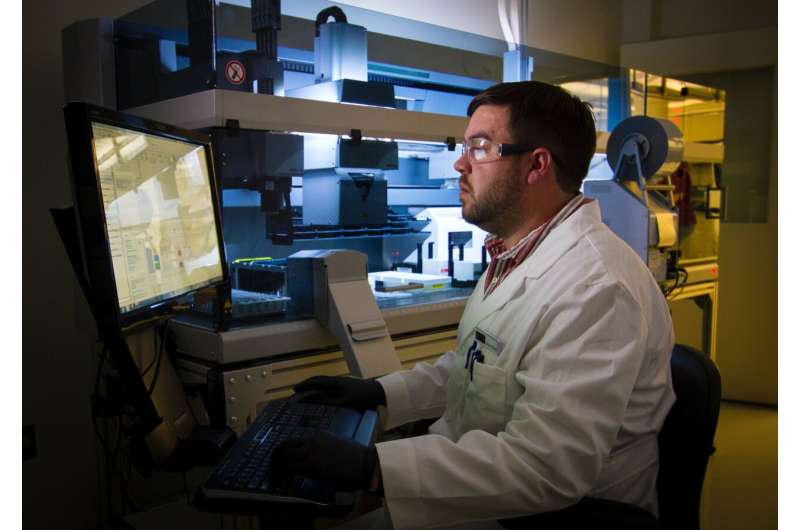This article has been reviewed according to Science X's editorial process and policies. Editors have highlighted the following attributes while ensuring the content's credibility:
fact-checked
peer-reviewed publication
trusted source
proofread
Long-term follow up pinpoints side effects of treatments for prostate cancer patients

A 10-year follow-up study of nearly 2,500 U.S. men who received prostate cancer treatment will help inform decision-making in terms of treatments and side effects for a diverse population.
The CEASAR (Comparative Effectiveness Analysis of Surgery and Radiation for Localized Prostate Cancer) study, coordinated by Vanderbilt University Medical Center (VUMC), is a multisite research study conducting long-term follow-up on men who were diagnosed with localized prostate cancer between 2011 and 2012.
Researchers have now followed the same cohort of men for more than a decade, administering a series of questionnaires regarding urinary, bowel, sexual and hormone therapy-related side effects of treatment. The newly released JAMA study builds upon previous publications of three-year and five-year results.
"Many men with localized prostate cancer survive for 15 years or more, with minimal differences in survival among various treatment strategies," said first author Bashir Al Hussein Al Awamlh, MD, a fellow in Urologic Oncology at VUMC. "Given this long-time horizon, and similar survival rates, the choice of treatment for patients may be influenced by the adverse effects of the treatments."
The study includes nearly 2,500 patients: 1,797 non-Hispanic white men, 350 non-Hispanic Black men, 184 Hispanic men, 77 Asian men and 33 "other" races.
"Unlike previous studies, it focuses on contemporary treatment options," Al Hussein Al Awamlh added. "It uses real-world data representative of the U.S. population, with diversity of disease severity, geographic diversity, and racial/ethnic diversity."
Patients were classified based on cancer risk into two categories: favorable prognosis and unfavorable prognosis, which is important because unfavorable prognosis patients receive more intensive treatments.
The favorable-prognosis group chose either:
- Active surveillance, an observation strategy in which treatment is only used if the cancer gets worse over time.
- Nerve-sparing prostatectomy, surgical removal of the prostate with attempt to protect nerves that run alongside the prostate in hopes of minimizing the impact of surgery on erectile function.
- External beam radiation therapy (EBRT), a common therapy that uses daily doses of radiation to destroy cancer cells.
- Low-dose-rate brachytherapy, a type of radiation therapy involving implantation of radioactive "seeds."
The unfavorable-prognosis disease group chose either:
- Prostatectomy, which is surgery to remove the prostate.
- External beam radiation therapy with androgen deprivation therapy (ADT), which is radiation in combination with an anti-hormone therapy used to reduce levels of androgen hormones to enhance the effectiveness of radiation.
Findings
- Surgery with radical prostatectomy was associated with an increased risk of urinary incontinence over 10 years compared to other treatments, irrespective of cancer risk: 14%–25% of men who underwent surgery to remove the prostate reported bothersome leakage 10 years after treatment, as compared with 4%–11% of men who underwent EBRT.
- Patients with favorable cancer prognoses experienced worse sexual impairment for the first three to five years following surgery with radical prostatectomy compared to other treatment options. Sexual function scores were similar across treatments after five years, which may reflect age-related decline, gradual decline associated with radiation, and conversion from active surveillance to treatment.
- There were no significant differences in sexual function impairment between surgery with radical prostatectomy and radiation with ADT for patients with unfavorable prognosis cancer.
- Radiation therapy combined with hormone therapy (ADT) was associated with slightly worse bowel and hormone functions at 10 years for patients with unfavorable prognosis prostate cancer.
"The findings underscore the importance of counseling men with unfavorable prognosis prostate cancer differently than favorable prognosis cancer regarding expected long-term functional outcomes and suggest that adverse effects of treatments on sexual function may be deemphasized in decision making for some men," said senior author Daniel Barocas, MD, MPH, professor and executive vice chair of Urology at VUMC.
"They also highlight the benefits of active surveillance, when oncologically safe for patients with favorable-prognosis prostate cancer, by avoiding adverse effects associated with other treatment options," he said.
The authors are developing a personalized, patient-facing prediction tool using the study data to offer functional estimates through 10 years based on different treatment strategies to aid in decision making.
More information: Functional Outcomes After Localized Prostate Cancer Treatment, JAMA (2024).



















